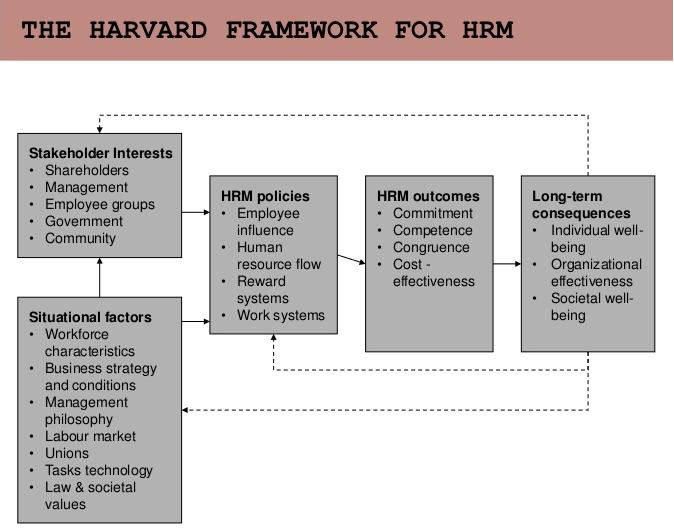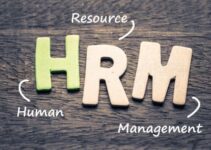Human Resource Management Models
Four major models have been identified for human resource management and all these serve many purposes.
1. They provide an analytical framework for studying Human resource management (for example, situational factors, stakeholders, strategic choice levels, competence)
2. They legitimize certain HRM practices; a key issue here is the distinctiveness of HRM practices: “It is not the presence of selection or training but a distinctive approach to selection or training that matters”.
3. They provide a characterization of human resource management that establishes variables and relationships to be researched.
4. They serve as a heuristic device-something to help us discover and understand the world for explaining the nature and significance of key HR practices.
The four HRM models are: (i) The Fombrun, (ii) The Harvard, (iii) The Guest, and (iv) The Warwick.
The Fombrun, Tichy and Devanna Model
Being the first model (dates back to 1984), this emphasizes just four functions and their interrelatedness. The four functions are selection, appraisal, development, and rewards. These four constituent components of human resource management and are expected to contribute to organizational effectiveness.
The Fombrun model is incomplete as it focuses on only four functions of HRM and ignores all environmental and contingency factors that impact HR functions.
The Harvard Model
The Harvard model claims to be comprehensive in as much as it seeks to comprise six critical components of HRM. The dimensions included in the model are stakeholders, interests, situational factors, HRM policy choices, HR outcomes, long-term consequences, and a feedback loop through. The outputs flow directly into the organization and the stakeholders
The Guest Model
Yet another human resource management model was developed by David Guest in 1997 and claims to be much superior to other models. The details will justify the claim. This model claims that the HR manager has specific strategies to begin with, which demand certain practices and when executed, will result in outcomes. These outcomes include behavioral, performance-related, and financial rewards.
The model emphasizes the logical sequence of six components: HR strategy, HR practices, HR outcomes, behavioral outcomes, performance results, and financial consequences. Looking inversely, financial results depend on employee performance, which in turn is the result of action-oriented employee behaviors. Behavioral outcomes are the result of employee commitment, quality, and flexibility, which, in turn, are impacted by HR practices. HR practices need to be in tune with HR strategies which are invariably aligned with organizational strategies.
The claim of the Guest model that it is superior to others is partly justified in the sense that it clearly maps out the field of HRM and delineates the inputs and outcomes. But the dynamics of people management are so complex that no model (including the Guest model) can capture them comprehensively.
The Warwick Model
This model was developed by two researchers, Hendry and Pettigrew of the University of Warwick (hence the name Warwick model). Like other human resource management models, the Warwick proposition centers around five elements
- Outer context (macro-environmental forces)
- Inner context (firm-specific or microenvironmental forces)
- Business strategy content
- HRM context
- HRM content
The Warwick model takes cognizance of business strategy and HR practices (as in the Guest model), the external and internal context (unlike the Guest model) in which these activities take place, and the process by which such changes take place, including interactions between changes in both context and content.
The strength of the model is that it identifies and classifies important environmental influences on HRM. It maps the connection between the external and environmental factors and explores how human resource management adapts to changes in the context. Obviously, those organizations achieving an alignment between the external and internal contexts will achieve performance and growth.






